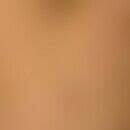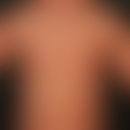DefinitionThis section has been translated automatically.
Procedure belonging to balneotherapy : Artificial and natural sodium chloride waters with sodium ion content higher than 5.5 g/kg and chloride ion content higher than 8.5 g/kg (corresponding to 240 mv/kg). For brine UV therapy, 15-minute bath in a saturated 27% saline solution (Starksole), followed by UVB or SUP irradiation. The use of bath salts from the Dead Sea has proven to be particularly effective. For comparison: The salt content in sea water is about 4% common salt, the content in the Dead Sea is up to 30%, where besides sodium chloride, other salts are also present, e.g. magnesium and potassium chloride.
Spectrum of actionThis section has been translated automatically.
Mineral additives, especially common salt, can considerably increase the specific weight of the water and thus water pressure and buoyancy. Sea water contains about 4 % common salt, which already noticeably increases buoyancy. Warm common salt baths contain between 25 and 30 % common salt (Dead Sea concentration) and can hardly be achieved by artificial solutions of salt, because for a bath in a household tub with 100l about 30 kg of salt is needed.
IndicationThis section has been translated automatically.
Psoriasis, atopic eczema, seborrhoeic eczema, mild forms of ichthyosis, solevaginal irrigations in gynaecology.
LiteratureThis section has been translated automatically.
- Uehleke B et al (2012) in: André-Michael Beer, Martin Adler [Ed.] Leitfaden Naturheilverfahren für die ärztliche Praxis, Urban und Fischer Verlag p. 53.



